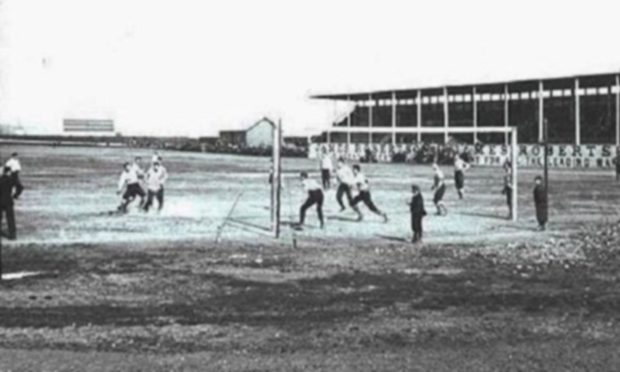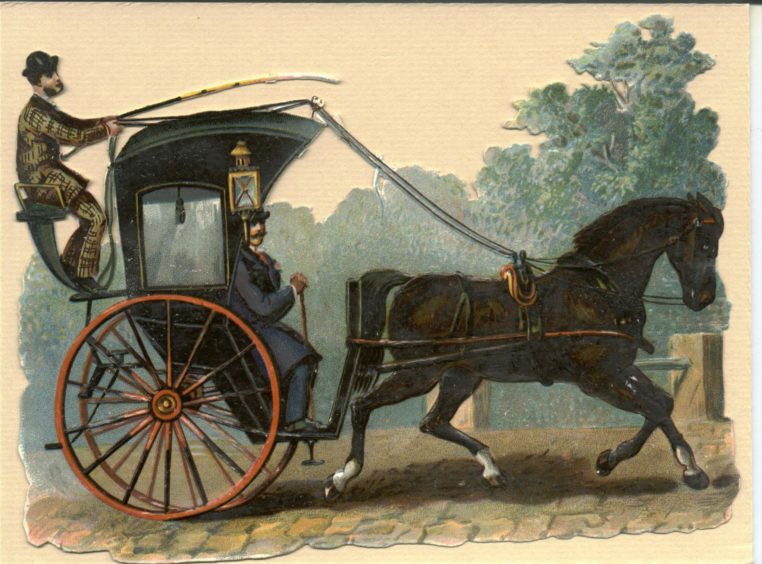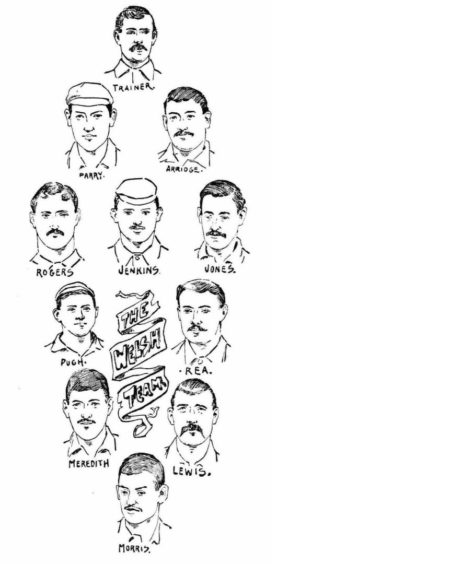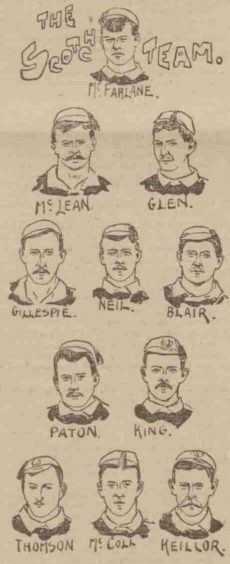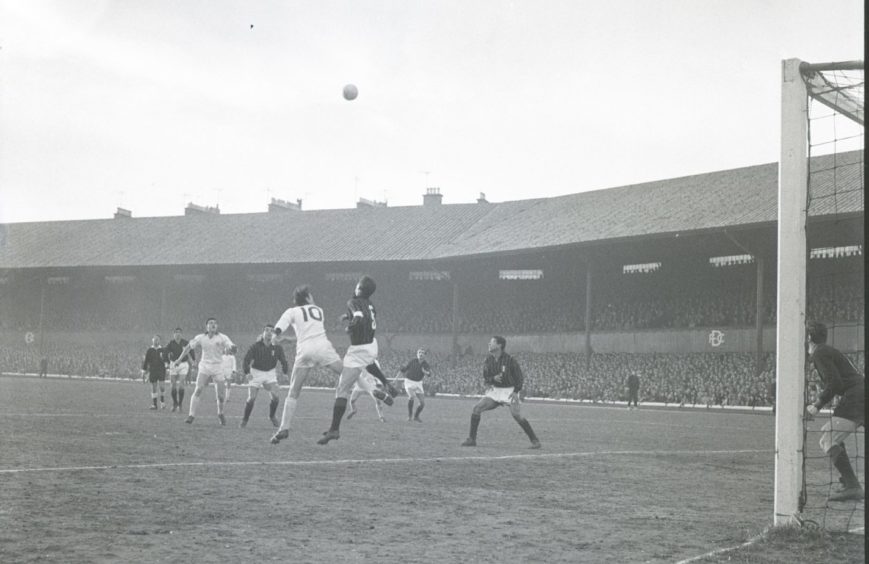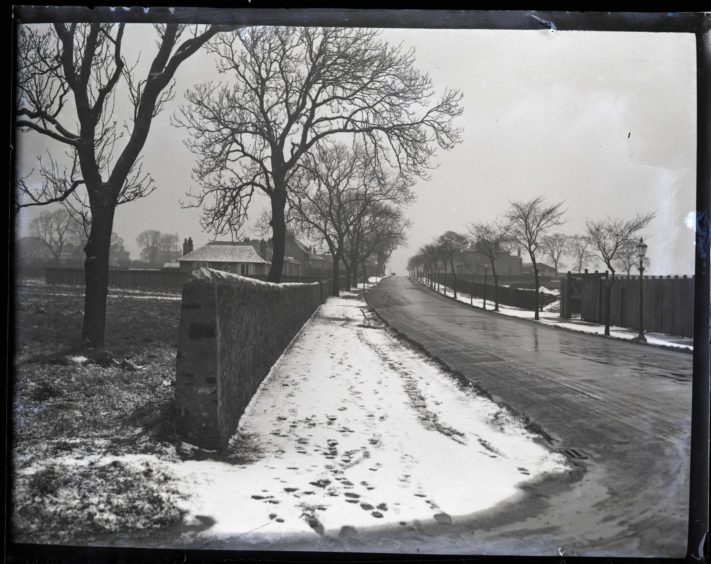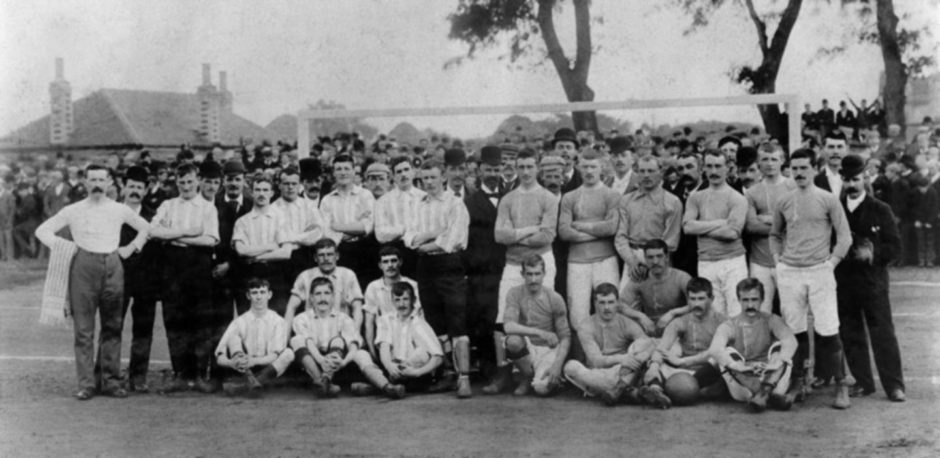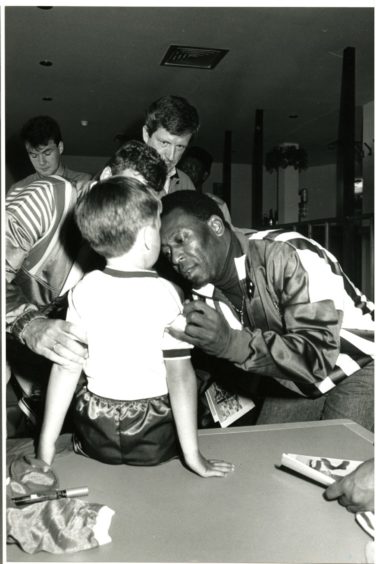Scotland and Wales put Dundee on the international football map 125 years ago in scenes to rival the great European nights of the 1960s.
Dundee FC’s home ground Carolina Port was chosen by the SFA to stage a fixture which had previously been played outside Glasgow in Paisley, Edinburgh and Kilmarnock.
Dundee had moved to Carolina Port in 1894 where a steaming rubbish dump on the neighbouring gas works regularly gave hundreds of fans a free view of games.
The ground was extended to increase capacity ahead of an international match which was described as being “unparalleled in the history of Dundee football”.
The March 21 1896 fixture was the first Scotland game to be played in Dundee and special trains were put on from Perth, Kirriemuir, Forfar and Arbroath.
Cobbled streets were a hive of activity
The trains brought large numbers of people to the city in the early part of the afternoon while existing services from Glasgow, Edinburgh and Aberdeen were increased.
Dundee’s cobbled streets were bustling and there were nine police officers stationed on the route between Commercial Street and Carolina Port to direct a stream of traffic bringing fans to the game which included hansom cabs and horse-drawn omnibuses.
A hackney carriage driver with three horses almost knocked down a police officer in the street after failing to slow down and was taken to court where he was fined 10 shillings and sixpence for “furious driving”.
There was further drama when another horse-drawn cab broke down across the railway lines at the harbour but fortunately nobody was injured.
The gates opened at 1pm and by 2pm the north stands were crowded while the two teams and the executive committee had lunch together before the 4pm kick off.
Wales were the first to step on to the pitch but Scotland were 10 minutes late to appear after Queen’s Park striker Bobby McColl missed his train from Glasgow.
The Scotland team wore the traditional dark blue jersey with the lion rampant badge but were dressed in all sorts of different coloured pants and stockings.
Welsh defender made Arsenal history
The Courier journalist described the Welsh team which emerged as looking like a “sturdy, hardy set of players, though one or two had a somewhat boyish appearance”.
Among the Welsh side was Woolwich Arsenal captain Caesar Jenkyns who was winning his first cap to make history as the London club’s first ever international player.
Jenkyns was regarded as one of the most rugged defenders of his era and was described as being remarkably quick “for a man of such weight”.
Sandy Keillor became the first Dundee player to score for his country with a “lightning shot” as Scotland ran out 4-0 winners in front of almost 12,000 fans.
The Courier suggested he could have score more but “seemed inclined to lie rather far down the field and he spoiled one or two good chances in this way”.
Bobby Neill from Hibernian got two goals and Danny Paton from St Bernard’s also scored in the British Home Championship match.
The Welsh did have chances to make the score more respectable but Robert MacFarlane from Morton “gave a fine exhibition of goalkeeping” on his debut.
Sandy Keillor was a Rolls-Royce footballer
Norrie Price – author of ‘Up Wi’ The Bonnets! The History of Dundee FC’ and ‘They Wore The Dark Blue’ books – said: “Right winger Bill Thomson also became the fifth Dundee man to play for his country during the game.
“Two Dundee players in the Scotland team only added to the attraction.
“A good season for Dundee in the Scottish Division One culminated in getting to host the international match against Wales at Carolina Port.
“The icing on the cake in the 4-0 success was Sandy Keillor who was the Rolls-Royce of local footballers.
“As well as being amongst the trio of Dundee players who were first to pull on the dark blue of Scotland in 1894, Keillor now became Dundee’s first to score for Scotland.
“It was the first ever Scotland international at Dundee but not the first in Scotland to be held outside Glasgow.
“Scotland against Wales was previously held in Edinburgh in 1888 and 1892; Paisley in 1890; and Kilmarnock in 1894 where the gate brought £200 takings.
“The practice continued with Motherwell hosting the game in 1898 and Aberdeen in 1900.
“The Carolina Port attendance of 11,700 compared favourably with other venues for the same fixture.
“There was great excitement and the sketch in The Courier of brakes and cabs making their way to the game gives you an idea of that.
“As to Carolina Port itself?
“In its day it was a fine well-equipped stadium with a couple of stands.
“But it would have been full to bursting point on the day of the match against Wales with others perhaps looking on from the nearby ‘burning mountain’.
“So it would have been a terrific atmosphere and Scotland did well to win so comfortably.
“The city was also buoyant and busy all evening with both Dundee East and West stations busy with extra trains laid on.
“It was a very special occasion with people coming from all around Scotland to experience a novelty – rather like the huge crowds when Dundee FC played in the European Cup of 1962-63 when European football was in its infancy.”
Record gate receipts
The gate receipts from Carolina Port were a record for a Scotland versus Wales match and brought in £462, 18 shillings and sixpence.
Before the game the Dundee FC committee had expressed its hope that a successful staging of the game could lead to the city getting more international fixtures.
Despite all going without a hitch and record takings, the bean counters at the SFA were reported to be unhappy at the attendance after expecting double that.
The fans in attendance didn’t have long to wait for the match report because the Evening Telegraph had a staff of reporters present in the busy press box.
A special pink edition featured an exhaustive report with sketches and notes of the play after the result was wired as soon as the game ended.
The success of the operation was in evidence as the fans streamed out of the ground after the win to be met by newsboys selling the special edition.
A large company including members of the SFA and the Scottish and Welsh teams then dined together in the Royal Hotel in Dundee after the game.
John Taylor, secretary of the Welsh Football Association, said the party had enjoyed their visit to Dundee very much despite the result at Carolina Port.
He said they hoped this might not be the last time they would come to Dundee and thanked the public for the reception they had given them.
Dens Park move
Our Boys before the club merged with local rivals East End to form Dundee FC in 1893 and started life at Our Boys’ home ground at West Craigie Park.
Dundee moved to Carolina Port in 1894 but decided to up sticks in 1899 after racking up vast debts as a result of diminishing crowds because it was simply too isolated.
The club was eventually saved from going out of existence in 1898 and the new executive committee held discussions with the trustees of the late Mr James Neish.
They agreed the lease for 10 years of a piece of ground which was about five acres and bounded on one side by the Clepington Spinning Company’s works and by Provost Road on the other.
Dens Park officially opened in 1899 at the turn of a century when Fred McDiarmid was awarded a medal for scoring the first goal on the new ground against St Bernard’s and the crowds started to flock to the more accessible Dens Park.
Norrie said: “The problem with Carolina Port was its relatively remote location back then.
“The Scotland versus Wales game in 1896 was a big occasion but after performances dipped and Dundee overspent in subsequent seasons, location was a problem leading to liquidation in December 1898.
“That financial collapse which brought businessmen and supporters together to save the club and the subsequent move to Dens Park might be seen as a blessing in disguise.”
Dens would go on to host three international games between Scotland and Wales in 1904, 1908 and 1936.
The ground also hosted a European Cup semi-final between the Dark Blues and AC Milan in 1963, a Fairs Cup semi-final with Leeds United in 1967, as well as two League Cup Finals in 1979 and 1980.
Pele played in Cuban heels
Dens also hosted Group C matches in the under-16 FIFA World Cup in 1989, featuring Argentina, Nigeria, Canada and China.
The great Brazilian Pele attended the tournament in his role as FIFA ambassador and signed autographs and spoke to school children before one of the games.
The Santos and New York Cosmos legend also showed off his skills with a game of keepy-uppy on the Dens Park pitch despite wearing jeans and Cuban heels.
